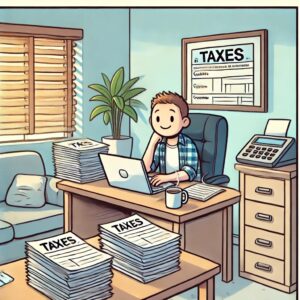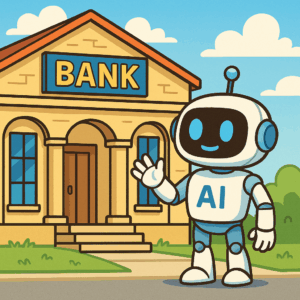Human resource strategy is as important to develop as a good business plan. You need to establish your HR strategy for the future, so that when you grow, your company is ready. If you’re already experiencing growth, it’s even more critical to start future-proofing.
An HR plan prepares your team to execute on your business strategy. It puts a solid foundation under your current staff, while anticipating the needs of future staff. Your managers can make more informed hiring decisions, and better handle turnover. A comprehensive HR plan also includes a succession plan, which helps to limit disruptions to your business if something big changes.
5 steps to develop an effective, sustainable HR strategy
1. Assess your current workforce
First, get to know your employees a little better. You need to identify their current skills and abilities. This includes their education and any additional certifications or training they may have. You should also consider their talents beyond what their job descriptions say. What if you have a hidden sales gem in accounting? Or an expert at customer relationships doing data entry? You can coax out these insider details by talking with management and coworkers. Nothing beats a one-to-one with the employees themselves.
It may be obvious to you if you’re looking for info on your employees, but don’t neglect your personnel files. They likely contain a wealth of knowledge you can review to get a better understanding of your workforce. This includes information such as:
- Resume and qualifications
- Continuing education history
- Performance reviews
- Milestones or goals reached
Your performance reviews can be one of your most valuable tools in helping you determine which employees are willing to assume additional responsibilities. If an employee is consistently top-ranking in all categories, it’s a good indicator that they’re ready to move up to bigger and better things. Not all employees want to move to other positions, though. If this is the case, look for ways to challenge them in their current roles.
While you’re collecting these insights, consider a way to store them in one accessible location. An organizational chart can be a helpful tool if you want to capture your research and review it in a cohesive way.
2. Create employee development plans
The first step to having a winning workforce is to have qualified employees. But it doesn’t stop there. Start with qualified employees, then help grow them. By setting up an employee development program, you’ll enable your employees to increase their skills and advance their own career (which helps YOUR business).
Follow these steps to help make sure your employees’ development plans are on point.
1. Consider your business goals. Align the plan with your company’s needs.
2. Talk to your employees. Don’t assume you know what they want from their career.
3. Determine your employees’ areas of improvement and decide what skills they need to acquire.
4. Create an action plan for your employees that will accomplish your objectives.
5. Give them an opportunity to apply the new skills in the workplace quickly, and receive feedback.
Keep in mind that even high achievers have room for improvement. Don’t neglect those who are already performing well – they need to continue to grow! It’s also important to keep employee development plans positive. You don’t want them to be viewed as a form of corrective action. Pitch it as an opportunity to maximize individual potential, because that’s exactly what it is. Employees who are challenged by their work stick around, becoming part of your company’s present AND future growth.
3. Create a succession plan
With business growth comes change. Whether it’s a shift in the executive team or a reorganization of departments, you need to be prepared. A succession plan helps minimize disruption by identifying critical roles in your business and employees who have the skills to immediately assume these positions.
You can choose to involve employees directly in your succession plan, or create your succession plan behind the scenes. If you involve your employees, it will mean having important conversations with key players. Whatever route you choose, be prepared to keep your employees informed about any changes, and explain how they will be affected. Direct, transparent communication is best, and keeps the chatter in check.
4. Perform a gap analysis
A gap analysis helps you identify what resources your company currently has, and predicts what you’ll need in the future. During this process, you’ll find out where your company is falling short. You may find out your HR practices that fit the company five years ago no longer work. And if they don’t work now, they certainly won’t five years from now! After you identify these issues, you can improve your current procedures and implement new practices that better support your business’s growth.
In your gap analysis, you’ll want to focus on
Job descriptions
- Do they accurately describe the positions within your company? Do they outline all the necessary skills, requirements, and expectations?
Employee handbook
- Has an HR professional reviewed the handbook in the last two years?
- Are your policies still aligned with employment laws? (This is particularly important if you’ve expanded into new cities or states.)
- When was the last time your employees reviewed the handbook? Ask them to re-read once you make any updates.
Training programs
- Are your employees training in a way that will allow them to achieve your business objectives?
Health benefits
- Are you providing what’s required by the Affordable Care Act (ACA)?
- Are your benefits meeting the needs of your employees?
Paid leave
- Make sure you’re in compliance with regulations on paid time off, including medical and family leave. Check the laws for your state.
Employment costs
- Are you paying for any hidden costs of employment? Can costs be reduced?
5. Predict resource needs for the future
As your business grows, so will your staffing needs. To find the best people for the job and your business, start by knowing what you need.
Put the information that you’ve gathered to work. Are your staffing needs met? Does your current workforce have the skills to achieve your business goals? The answers to these questions will help you determine if you need to promote from within or recruit new talent as your business grows. Many times a current employee who is a known culture fit is worth some additional training.
Now look at your potential staffing challenges. Here are some of the most common struggles that could make it difficult for you to recruit new employees:
You may encounter potential staffing challenges. Here’s some common struggles:
- Your compensation package doesn’t meet the expectations of your ideal candidates.
- There’s a shortage of experienced candidates that qualify for your open positions.
- Your company culture doesn’t attract top talent, who can be choosy about where they work.
Knowing these things can help you avoid recruiting roadblocks before they become a problem. Try to resolve potential issues before inviting candidates to apply. And once you attract the right talent, you need to retain them!




